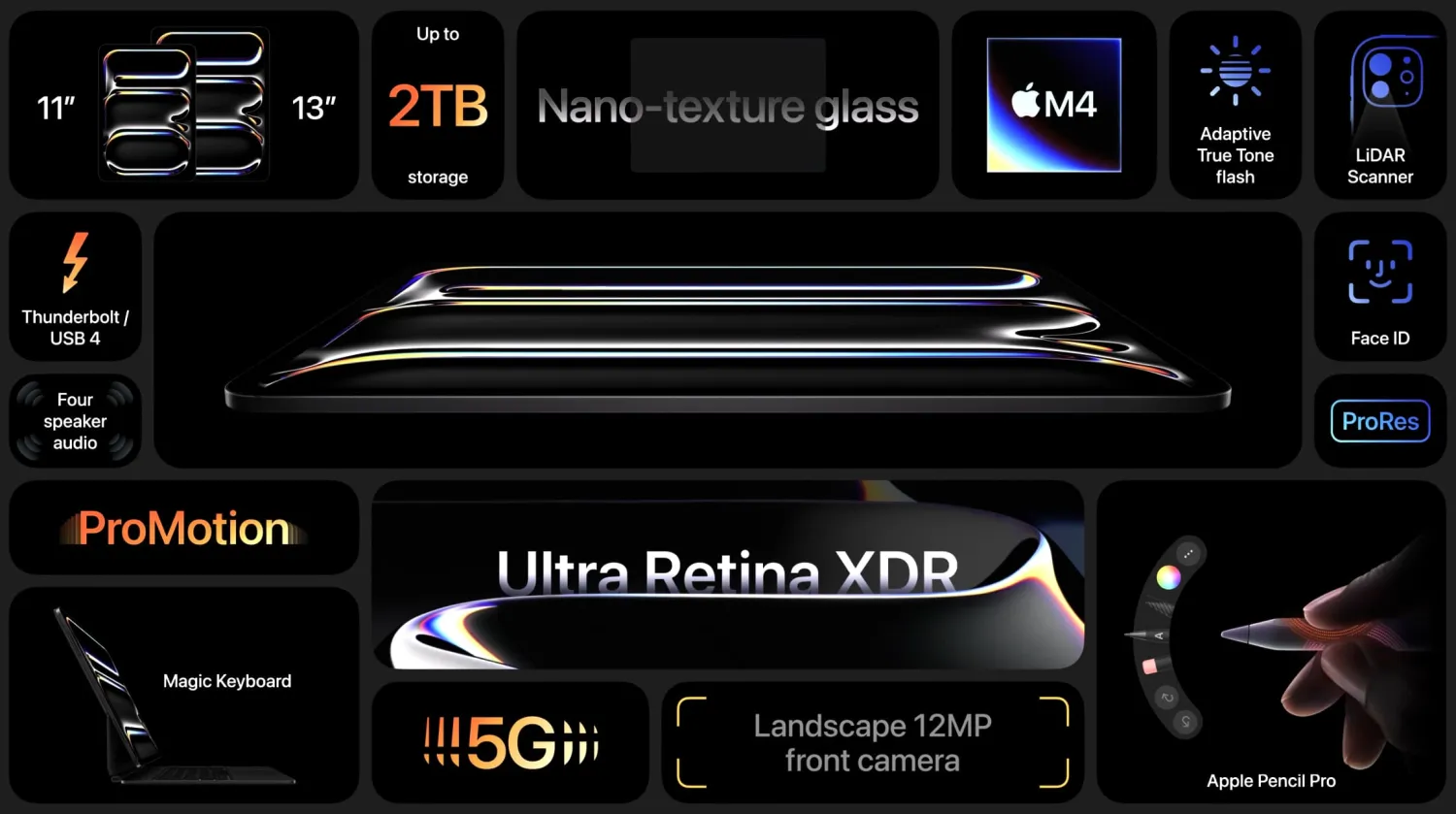 611
611
 2024-05-09
2024-05-09

Yesterday Apple unveiled the next generation of the iPad Pro, a major update including an M4 chip, OLED-powered Ultra Retina XDR display, ultra-thin industrial design, and more.
In the last couple generations of iPad Pro, there was a key difference between the 11-inch and 13-inch models that many shoppers didn’t know about. The larger model came with significantly better display technology than its smaller sibling. That’s changed with the M4 iPad Pro, with Apple giving both models with the same top-tier Ultra Retina XDR.
However, while it was not announced in the keynote, Apple is nonetheless shipping two very different tiers of M4 iPad Pro. This time around, the differences aren’t tied to the display. Rather, there are significant, unadvertised changes that will come depending on the storage option you choose.
Both the 11-inch and 13-inch M4 iPad Pros come in the following four storage configurations, with the cheapest non-cellular options starting at $999 for the 11-inch and $1,299 for the 13-inch base model:
You’ll notice that the leap from 512GB to 1TB is $400, which may seem like a lot for just doubling the storage. The jump from 1TB to 2TB costs the same $400 but includes significantly more storage. So why the huge jump between the two middle storage options?
Higher storage also means more RAM, CPU, and more

Once you hit the 1TB tier and above, you’re not just getting more storage, you’re also getting more RAM, CPU cores, and you can add a nano-texture glass option.
That’s right, there are really two different tiers of M4 iPad Pro:
If you’re shopping for an M4 iPad Pro, these are some key differences to be aware of.
Which iPad Pro is right for you?

Will these differences make a practical difference in your day-to-day use of the device? It depends on what you’re doing with it.
If you do a lot of heavy lifting with your iPad, such as video editing work with multiple streams of high-res 4K video, you’re likely better off future-proofing your device and going for the higher storage tiers. The extra storage itself may come in handy, but the other benefits make the upgrade even more compelling.
If your iPad Pro workflows aren’t necessarily as RAM-heavy, you probably won’t notice any difference going with one of the lower tier Pros.
In any case, it’s important to be aware of what you’re getting when you make a storage decision. It turns out, storage isn’t the only thing you’re actually choosing.
Source: 9to5mac